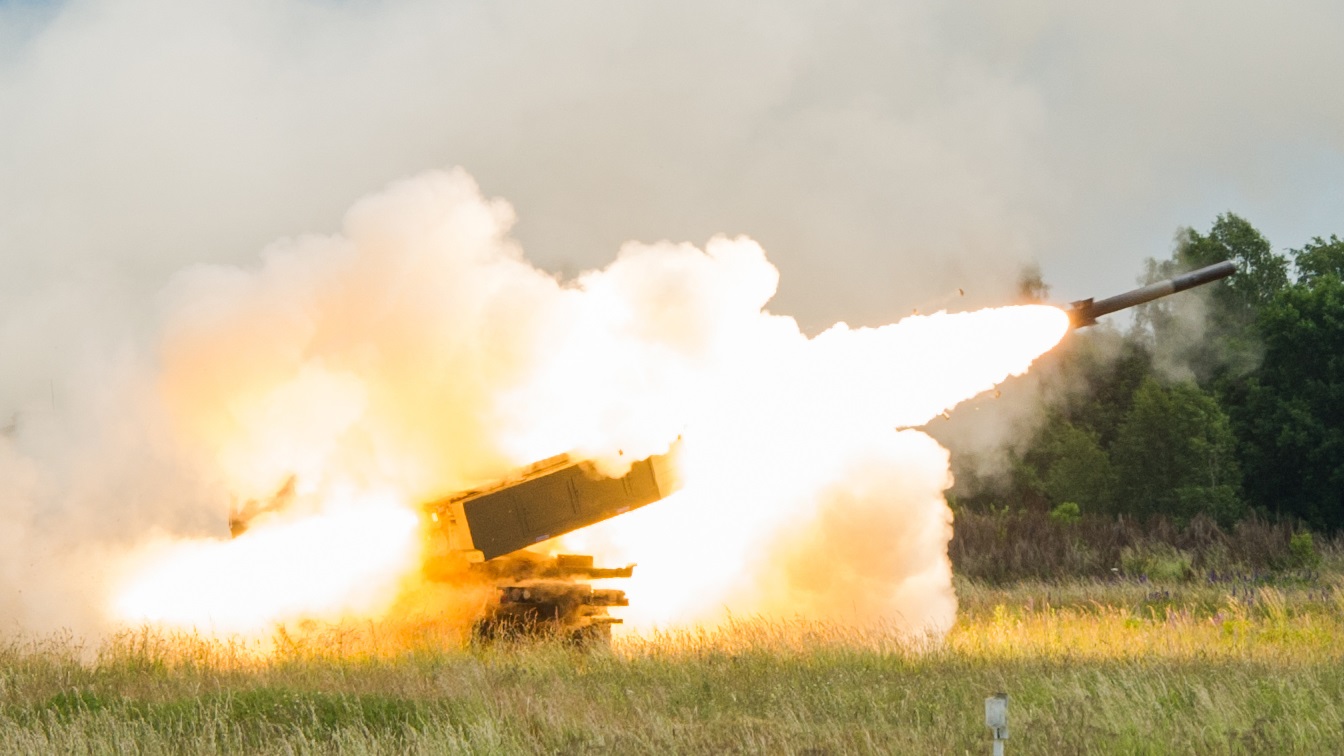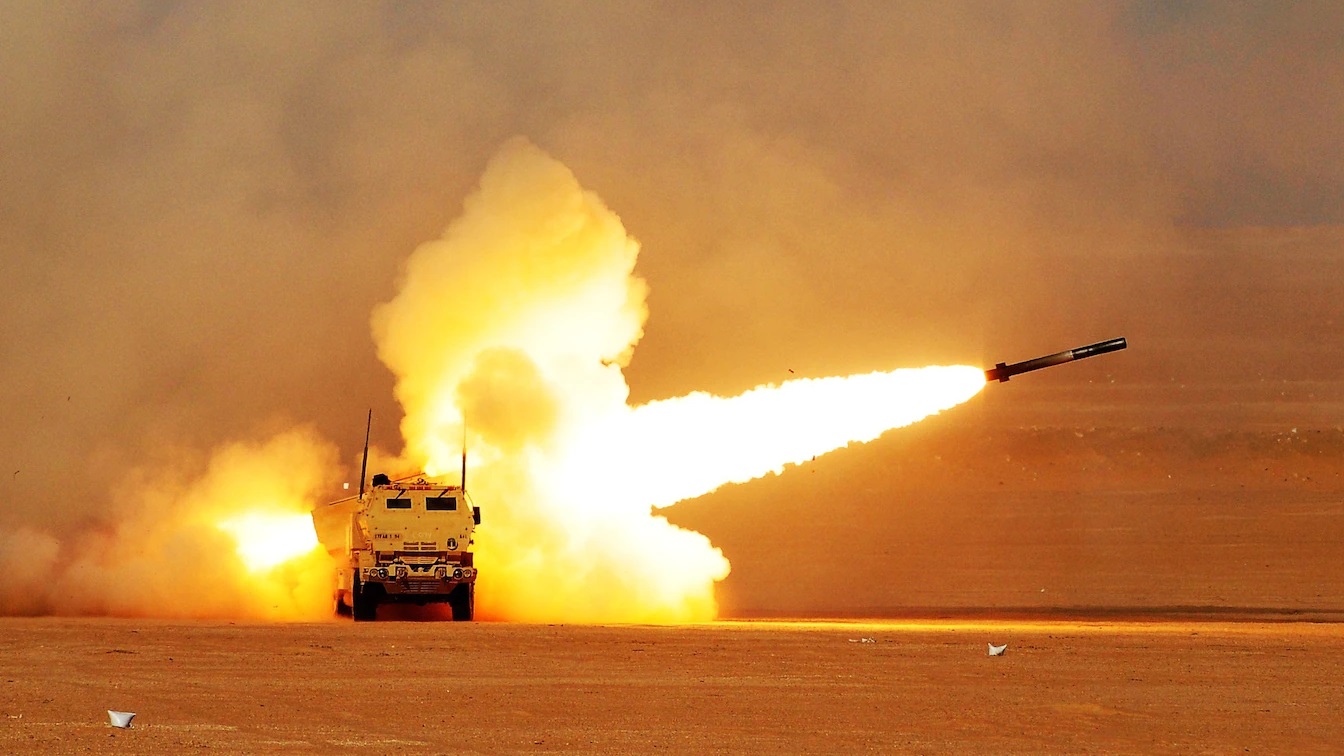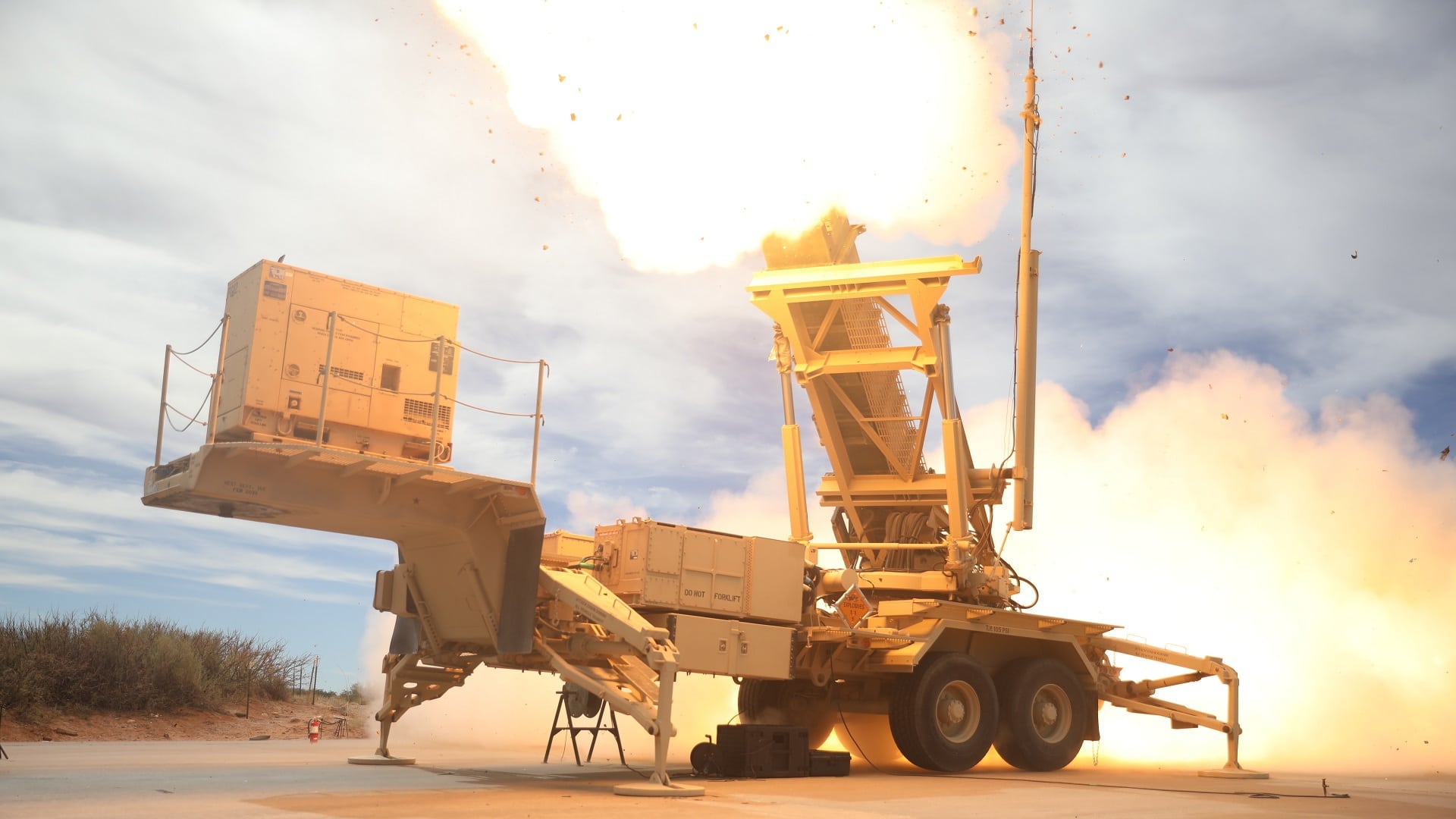Article Summary and Key Words: As the war in Ukraine drags on, President Donakd Trump seeks a swift resolution, potentially brokering a deal over European and Ukrainian objections. While Europe has been slow to bolster its defenses, recent developments suggest a shift—Britain and Germany are signaling major increases in military spending.
Key Point #1 – Meanwhile, Trump’s proposed mineral deal with Ukraine remains uncertain, as many key reserves lie in Russian-occupied territory.

M142 High Mobility Artillery Rocket System (HIMARS) vehicles with 1st Battalion, 181st Field Artillery Regiment, Tennessee Army National Guard participating in Saber Strike 17 execute a fire mission at Bemoko Piskie, Poland, June 16, 2017. This year’s exercise includes integrated and synchronized deterrence-oriented training designed to improve interoperability and readiness of the 20 participating nations’ militaries. (U.S. Army photo by Markus Rauchenberger)
Key Point #2 – While the U.S. refocuses on Asia, cutting military aid to Ukraine would likely lead to its collapse. The challenge remains finding a lasting peace while ensuring Ukraine’s sovereignty and deterring further Russian aggression.
What Happens If the U.S. Pulls Military Aid from Ukraine?
With no end in sight to the war in Ukraine, American President Trump has touted his deal-making ability to end hostilities. And while Trump has indicated a willingness to strike a deal with Russia above the heads of European allies — and Ukraine itself — a lasting, and crucially, a fair, agreement would take both European and Ukrainian buy-ins.
Europe, Rise to the Occasion!
Vice President JD Vance made waves with his speech at the Munich Security Conference. In it, he repeatedly berated America’s European friends, causing great consternation among NATO allies.
Following his speech, pundits pointed out that eight years after Trump urged NATO to do more for its defense, the continent’s defensive posture is much the same.
Europe still has not stepped up in a meaningful way — an incredible state of affairs. It has taken the threat of an American troop withdrawal from Europe to catalyze change rather than the biggest war since 1945 — involving a nuclear-armed Russian state seemingly intent on expansion.
Some nations have taken heed; however, British Prime Minister Keir Starmer signaled he would be prepared to send British troops to Ukraine as part of an international peacekeeping force, should the war in Ukraine conclude with that requirement. The Russians have pushed back against the idea of European involvement in Ukraine in a peacekeeping capacity.
Prime Minister Starmer also announced a significant boost to defense spending earlier this week, aiming to allocate 2.5 percent of GDP for defense by 2027 while eyeing a 3 percent target in the future.
He will have to cut foreign aid to achieve that goal but downplayed his upcoming meeting with President Trump as the impetus for the defense boost.
In Germany, rumor has it that the winners of the recent federal election, the center-right Christian Democrats, would like to inject hundreds of billions of Euros into the Bundeswehr. Coalition negotiations, however, could drag on for months, and achieving that spending bump faces significant hurdles.
Germany’s constitutionally-mandated debt brake prohibits borrowing in excess of 0.35 percent of GDP, and securing a large amount of additional money for the Bundeswehr would require steep cuts to other parts of the budget, sure to be politically unpopular or a declaration of national emergency to circumvent the brake.
The Ukraine Mineral Deal
Ever eager to strike a deal, President Trump’s recently-announced mineral deal with Ukraine was his pitch to find an end. A look at the full text of the deal, available here, provides another picture, however.
Ukraine initially floated the idea to the deal-hungry Trump. However, many of Ukraine’s mineral deposits are not proven; they are merely speculative. A significant portion of proven reserves are in areas under Russian control. With Moscow highly unlikely to give up those deposits of coal, iron, and other minerals, a path forward is unclear.
Compared to the previous version of the deal, this final version establishes a fund to invest in projects in Ukraine. Proceeds from the “future monetization” of minerals controlled by the Ukrainian state would go into the fund. Still, crucially, exceptions are made for minerals that are already contributing to Ukrainian government revenue and carve out niches for Ukrnafta and Naftogaz, Ukraine’s biggest oil and gas producers.
What Happens Now?
While there is an argument to be made that the United States needs to allocate greater resources to Asia and the Indo-Pacific region as an area of greater threat and concern, it is equally true that Beijing is keeping a close eye on the war in Ukraine and the United States’ actions.
Europe is seemingly now motivated to increase defense spending and boost their own military capabilities — but if a quick end to the war in Ukraine can be found, and if that end would be lasting, remains to be seen.

M142 HIMARS. Image Credit: Creative Commons.
What is certain, however, is if the United States were to cut all military aid to Ukraine abruptly, that country would collapse in the face of the Russian war machine and be subjected to a long and terrible occupation.
About the Author: Caleb Larson
Caleb Larson is an American multiformat journalist based in Berlin, Germany. His work covers the intersection of conflict and society, focusing on American foreign policy and European security. He has reported from Germany, Russia, and the United States. Most recently, he covered the war in Ukraine, reporting extensively on the war’s shifting battle lines from Donbas and writing on the war’s civilian and humanitarian toll. Previously, he worked as a Defense Reporter for POLITICO Europe. You can follow his latest work on X.

